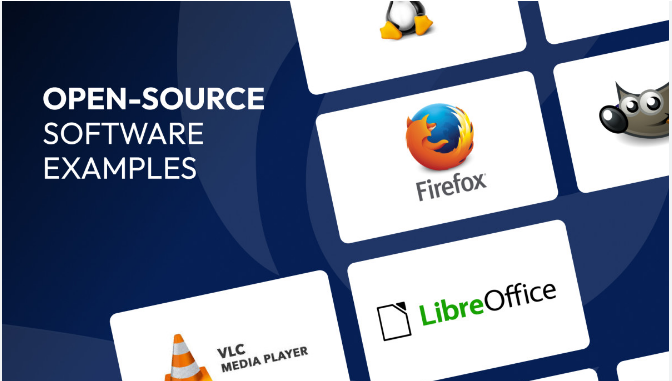
Open source might be the building blocks of the modern software stack, but companies building businesses off the back of open source software face a perennial struggle between keeping their community happy and ensuring that third parties don’t abuse the permissions afforded by the license.
Many companies have launched with lofty open source ambitions, only to duck for cover once the realities of the commercial world hit home. It’s all about protecting their bottom line, especially with investors (public or private) to appease.
But it can be difficult keeping tabs on all these changes, while also distinguishing those that have abandoned open source altogether and those that have sought sanctuary behind a less permissive (but still open source) license (as the likes of Element and Grafana have done in the past few years).
As such, TechCrunch has compiled a timeline of open source companies that have changed course over the past decade.
The world of open source software is built on the principles of collaboration, transparency, and community involvement. However, over the years, several open source software companies have made the decision to go proprietary, abandoning their open source roots and embracing a more closed and commercial approach. In this article, we will explore a timeline of open source software companies that have gone proprietary.
1. MySQL (2008)
MySQL was one of the most popular open source databases in the world. However, in 2008, the company was acquired by Sun Microsystems, which was later acquired by Oracle. Oracle decided to take MySQL proprietary, and while the company still maintains a community edition, the commercial version is now closed source.
2. XenSource (2007)
XenSource was a company that developed the popular Xen open source virtualization platform. However, in 2007, the company was acquired by Citrix, which decided to take the Xen platform proprietary. While Citrix still maintains a community edition of Xen, the commercial version is now closed source.
3. JBoss (2006)
JBoss was a popular open source application server that was acquired by Red Hat in 2006. While Red Hat has maintained JBoss as an open source project, the company has also developed a commercial version of the software that is closed source.
4. Zimbra (2007)
Zimbra was a popular open source email and collaboration platform that was acquired by Yahoo! in 2007. However, in 2010, Yahoo! decided to take Zimbra proprietary, and while the company still maintains a community edition, the commercial version is now closed source.
5. SugarCRM (2014)
SugarCRM was a popular open source customer relationship management (CRM) platform that was founded in 2004. However, in 2014, the company decided to take its software proprietary, and while it still maintains a community edition, the commercial version is now closed source.
6. Docker (2019)
Docker was a popular open source containerization platform that was founded in 2013. However, in 2019, the company decided to take its software proprietary, and while it still maintains a community edition, the commercial version is now closed source.
7. MongoDB (2018)
MongoDB was a popular open source NoSQL database that was founded in 2007. However, in 2018, the company decided to take its software proprietary, and while it still maintains a community edition, the commercial version is now closed source.
8. Elastic (2020)
Elastic was a popular open source search and analytics platform that was founded in 2012. However, in 2020, the company decided to take its software proprietary, and while it still maintains a community edition, the commercial version is now closed source.
Conclusion
The decision to go proprietary is a complex one, and there are many factors that can influence a company’s decision. While some companies may choose to go proprietary in order to increase revenue or protect their intellectual property, others may do so in response to changes in the market or the competitive landscape.
In the case of the companies listed above, the decision to go proprietary was likely driven by a combination of these factors. However, it is worth noting that the decision to go proprietary can also have negative consequences, such as alienating the open source community and reducing the transparency and collaboration that are hallmarks of open source software development.
As the software industry continues to evolve, it will be interesting to see how companies navigate the complex landscape of open source and proprietary software. Will we see more companies following in the footsteps of MySQL and MongoDB, or will we see a renewed commitment to open source principles and practices? Only time will tell.
Open source software companies have been a driving force in the tech industry, providing innovative solutions and promoting collaboration and community engagement. However, some open source software companies have chosen to go proprietary, abandoning their open source roots in favor of a more traditional, closed-source approach. In this article, we’ll explore the benefits of open source software companies going proprietary, highlighting key examples and milestones along the way.
Benefits of Going Proprietary
1. Increased Revenue: By going proprietary, open source software companies can increase their revenue through licensing fees and support contracts.
2. Improved Security: Proprietary software companies can invest more in security, as they have more control over the code and can respond more quickly to security threats.
3. Enhanced Support: Proprietary software companies can provide more comprehensive support to their customers, as they have more control over the software and can offer more tailored solutions.
4. Increased Innovation: By going proprietary, open source software companies can invest more in research and development, leading to more innovative solutions and products.
Timeline of Open Source Software Companies Going Proprietary
1. MySQL (2008): MySQL, a popular open source database management system, was acquired by Sun Microsystems in 2008. Sun Microsystems later introduced a proprietary version of MySQL, which led to a fork in the community and the creation of MariaDB.
2. SugarCRM (2010): SugarCRM, a popular open source customer relationship management (CRM) system, introduced a proprietary version of its software in 2010. The proprietary version offered additional features and support, but was not open source.
3. Eucalyptus (2011): Eucalyptus, an open source cloud computing platform, introduced a proprietary version of its software in 2011. The proprietary version offered additional features and support, but was not open source.
4. GitLab (2015): GitLab, a popular open source version control system, introduced a proprietary version of its software in 2015. The proprietary version offered additional features and support, but was not open source.
5. Redis Labs (2019): Redis Labs, the company behind the popular open source in-memory data store Redis, introduced a proprietary version of its software in 2019. The proprietary version offered additional features and support, but was not open source.
Conclusion
Open source software companies going proprietary can have several benefits, including increased revenue, improved security, enhanced support, and increased innovation. However, this approach can also lead to a loss of community trust and a fork in the community, as seen in the case of MySQL and MariaDB. Ultimately, the decision to go proprietary depends on the company’s goals, values, and target market.



